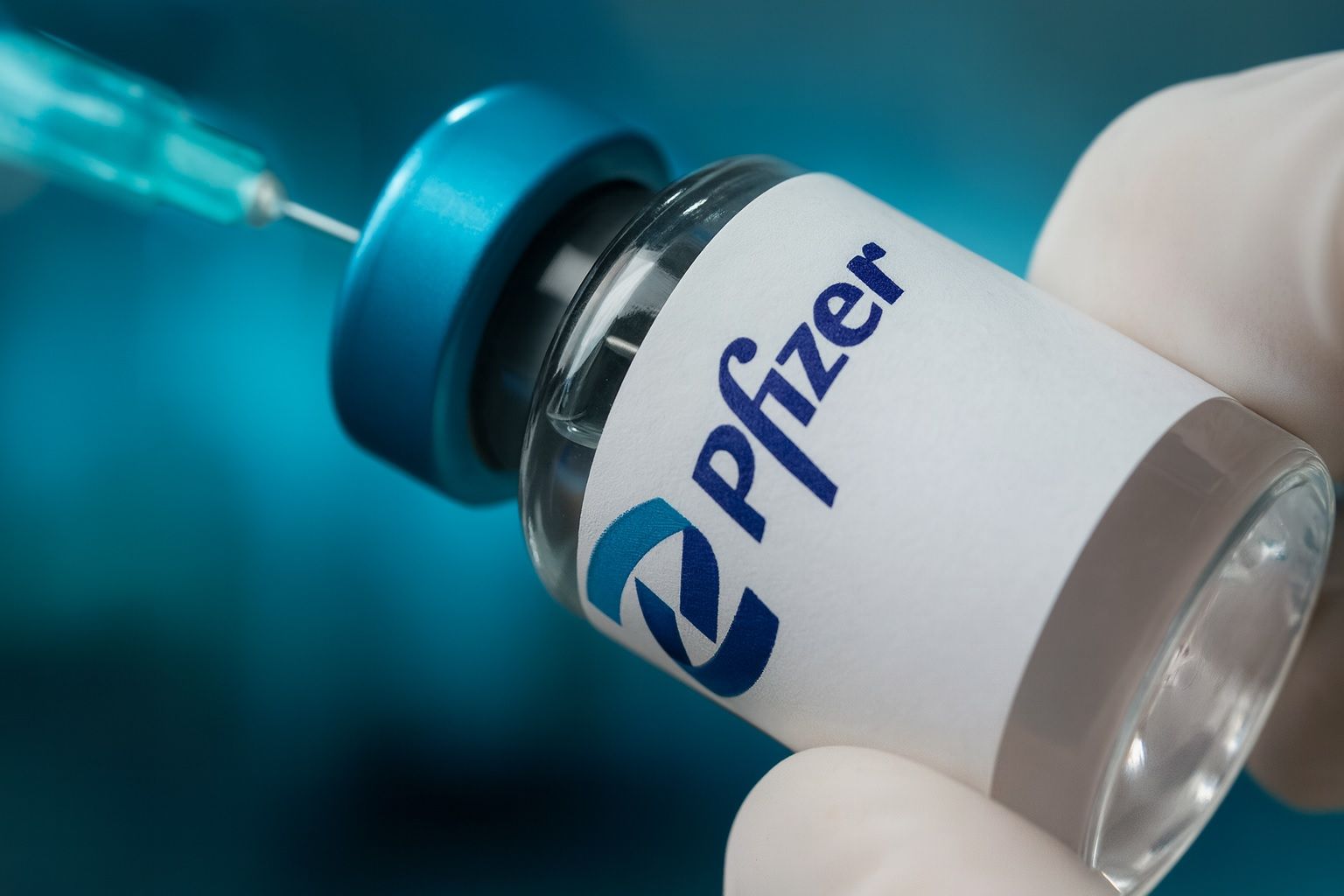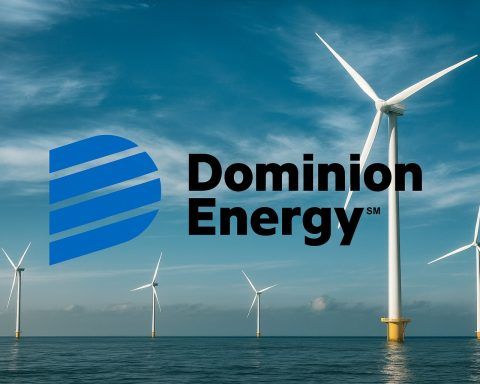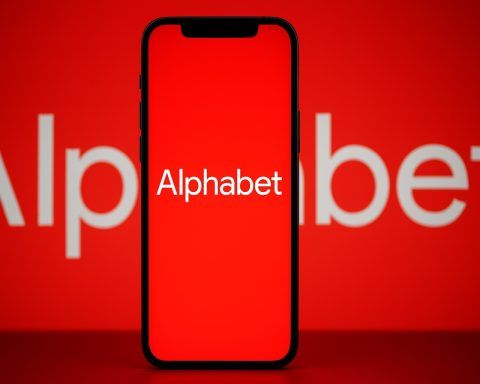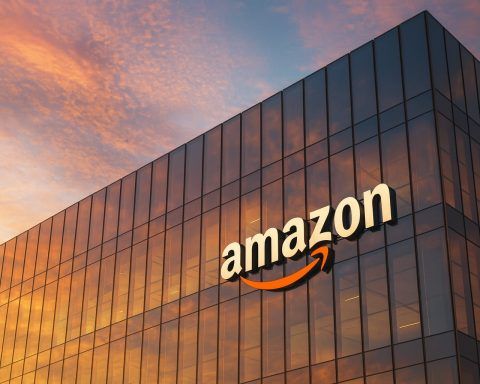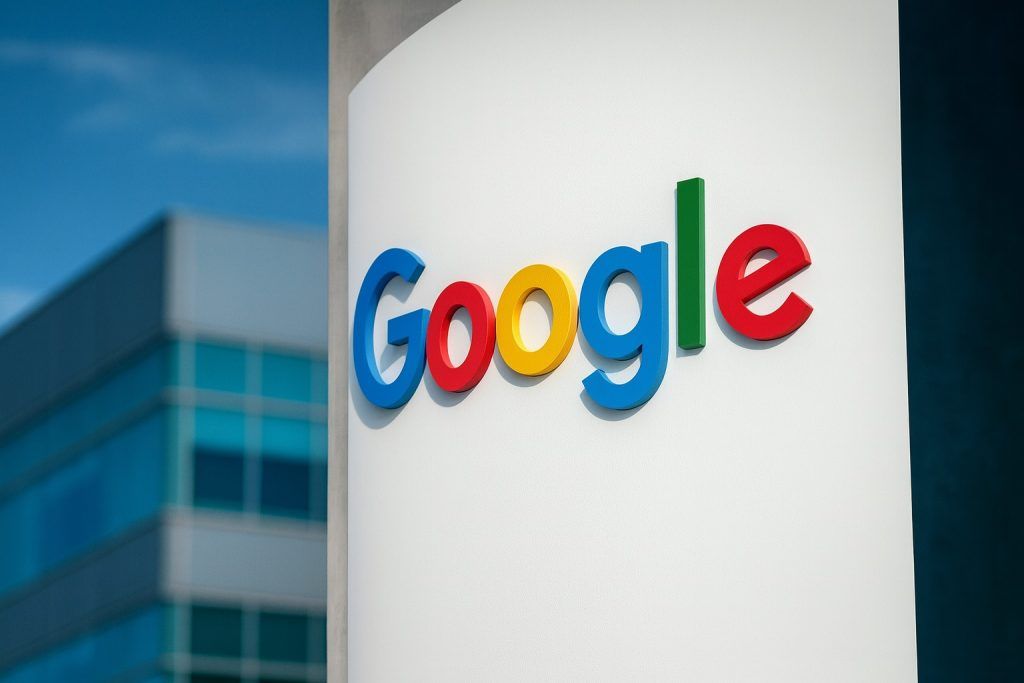- Stock Price & Recent Moves: Pfizer’s stock (NYSE: PFE) trades around the mid-$24 range as of Oct. 27, 2025. It closed at $24.76 on Oct. 24 and was roughly flat in pre-market trading Monday [1]. Shares surged ~15% in late September on major news, hitting ~$27 in early October [2], but have since settled back, leaving PFE about 9% higher than its 52-week low of ~$20.92 [3]. Year-to-date, Pfizer remains slightly down, underperforming the broader market.
- Q3 Earnings on Deck: Pfizer reports third-quarter 2025 results on Nov. 4. Analysts expect earnings to drop year-over-year (consensus ~$0.79 EPS for Q3 [4]) due to the “COVID cliff” – a steep fall in vaccine and antiviral sales – and higher costs. Pfizer already raised its full-year profit forecast after a strong Q2 [5] and is cutting $4 billion in costs to offset revenue declines and fund new drug development. Investors will watch if Pfizer can meet its 2025 sales guidance of $61–64 billion [6] (roughly flat vs. 2024).
- Trump Pricing Deal Changes Narrative: In late September, Pfizer struck a landmark agreement with the Trump administration to slash U.S. Medicaid drug prices to levels paid in other rich countries, in exchange for relief from looming 100% import tariffs [7]. This “TrumpRx” deal, announced Sept. 30, immediately lifted a cloud of regulatory risk. Pfizer’s stock jumped over 6% on the news [8], kicking off a sector-wide rally as investors cheered the avoidance of harsher pricing measures [9]. Analysts call the deal a “win-win” that cuts “a significant amount of political risk” for Pfizer and Big Pharma [10] [11].
- Betting on Obesity Drugs: Pfizer is wagering $7.3 billion to re-enter the booming weight-loss drug market. On Sept. 22 it agreed to acquire Metsera Inc. for $4.9B upfront plus contingent payouts (total up to $7.3B) [12]. Metsera brings several obesity drug candidates – including next-generation GLP-1 hormone analogs – which Pfizer hopes can challenge Novo Nordisk’s and Eli Lilly’s blockbuster obesity treatments [13]. Early trial data from Metsera’s lead drug showed ~14% weight loss in 28 weeks (placebo-adjusted), matching results of Lilly’s tirzepatide (brand name Zepbound/Mounjaro) [14]. Some on Wall Street see Pfizer as a “budget entry-point” into the weight-loss boom – a “hated” stock that now “looks like an obesity bargain” due to its low valuation [15] [16].
- Pipeline & Approvals: Beyond obesity, Pfizer’s R&D pipeline is active. It gained a trove of cancer drugs from its $43B Seagen acquisition (2023) and is showcasing data from 45+ oncology studies at the ESMO 2025 conference [17]. Just this month, a Pfizer/Astellas trial showed a Padcev® + Keytruda® combo cut death risk by 50% in certain bladder cancer patients [18] – results that could redefine standard of care. Pfizer also launched an updated COVID-19 booster (Comirnaty 2025–26 formula) adapted to new variants, which received FDA approval for high-risk groups in August [19]. Not all programs have panned out (Pfizer is pulling back on a partnered breast cancer drug under FDA review [20]), but positive trial wins and new approvals are providing fresh revenue opportunities.
- Analyst Outlook: Wall Street sentiment is cautious but improving. The consensus rating on PFE is “Hold,” with ~8 Buy, 15 Hold, and 1 Sell recommendations [21]. The average 12-month price target is around $29–30 [22], implying ~20–25% upside from current levels. Analysts highlight Pfizer’s bargain valuation – about 7–8× forward earnings (half the pharma industry average) [23] – and its hefty ~7% dividend yield, which is more than double peers like Merck or J&J [24]. That dividend (currently $0.43 quarterly) appears sustainable with a ~60% payout ratio [25]. However, looming patent expirations (e.g. heart drug Eliquis in 2026) and any resurgence of drug-pricing reforms keep some analysts on the sidelines [26]. The coming earnings and 2026 forecasts will be key to determining if Pfizer’s stock slump is a value trap or an undervalued turnaround story [27].
PFE Stock Price and Recent Performance
Pfizer’s stock has endured a rough 2025, trading in the low-to-mid $20s for much of the year and touching multi-year lows. By late September, PFE was around $23.60 – down ~9% year-to-date and ~18% from a year prior [28]. It languished near the bottom of its 52-week range ($20.92 – $30.43) [29] as the company faced a post-pandemic hangover: revenues from its COVID-19 vaccine (Comirnaty) and pill (Paxlovid) plummeted from $37.8B in 2022 to about $12.5B in 2024 [30]. Wall Street projected Pfizer’s EPS would fall by more than half from 2022 to 2025 [31], reflecting this “COVID cliff” in sales and ongoing patent cliffs ahead. These factors, along with drug pricing worries, weighed heavily on investor sentiment through Q3 2025.
That picture brightened suddenly as Q4 2025 began. In the final week of September, Pfizer’s stock staged a sharp rebound. PFE jumped about 15% in one week, rising from roughly $23.6 on Sept. 25 to around $27.2 by Oct. 1 [32]. On Sept. 30 alone, the stock spiked over 6%, then climbed further on Oct. 1 – marking one of Pfizer’s best weekly rallies in years [33]. This surge lifted shares toward the high end of their yearly range (~$28, near the 52-week high) [34]. The broader pharmaceutical sector also rallied in tandem, logging its biggest weekly gain since 2008, as investors rotated back into healthcare stocks [35] [36].
However, after that early-October peak, Pfizer’s stock leveled off. By Oct. 27, PFE is trading around $24.7 [37], about 9% below its recent high. The stock was essentially flat over the past week, reflecting a “wait-and-see” mood ahead of earnings. Despite giving back some gains, Pfizer is still above its late-September lows, indicating that investors are cautiously holding onto optimism from the recent news. At a market cap near $140 billion [38], Pfizer remains one of the world’s largest drugmakers – and now the question is whether it can build on this rebound or if shares will slip back without further positive catalysts.
Trump’s Drug-Price Pact Spurs a Relief Rally
A major spark for Pfizer’s turnaround was its high-profile deal with Washington. On September 30, President Donald Trump announced that Pfizer agreed to cut prices for its drugs sold to Medicaid (the U.S. government insurance for low-income patients) to match prices paid in other wealthy countries [39]. In return, the White House granted Pfizer a reprieve from punitive import tariffs that were set to hit foreign-made pharmaceuticals. Trump hailed Pfizer’s cooperation and unveiled plans for “TrumpRx,” a direct-to-consumer federal website to sell discounted medicines in 2026 [40].
For the pharmaceutical industry, this agreement broke a months-long stalemate over U.S. drug pricing policy. Trump had threatened drastic measures – from 100% tariffs to international price indexing – creating a cloud of uncertainty [41] [42]. Pfizer became the first major drugmaker to strike a deal, and its relatively moderate concessions calmed investors’ worst fears. “The Pfizer deal is expected to break the seal for other agreements,” noted one market observer, as companies saw that negotiating could avert harsher outcomes [43] [44]. Indeed, European healthcare stocks surged 5% on Oct. 1 (their biggest one-day jump since 2008) in reaction, and U.S. pharma names like Pfizer, Merck, Lilly and AbbVie rose 5–8% each [45] [46].
Market experts say this clarity was a game-changer. “Tuesday’s White House–Pfizer announcement was the catalyst for healthcare, freeing up investors to rotate into the beaten-down sector,” said Lara Castleton of Janus Henderson [47]. The agreement, seen as far less punitive than feared, removed a significant overhang. Guggenheim Securities analysts wrote that Pfizer’s pact “set up a template for broader industry agreement” and should benefit both the company and the government [48]. Investment bank William Blair likewise noted the deal cut “a significant amount of political risk” for Pfizer and its peers [49]. In essence, Pfizer sacrificed a slice of revenue – offering some drugs at ~50% discounts via TrumpRx [50] [51] – in exchange for greater certainty on U.S. pricing and a three-year respite from import tariffs. That trade-off was warmly received on Wall Street, as it potentially shields Pfizer’s U.S. business from more drastic drug price controls.
In the weeks since, other pharma giants followed Pfizer’s lead. Amgen struck a similar bargain, agreeing to sell its cholesterol drug Repatha at a 60% discount on a DTC platform [52], and AstraZeneca announced its own partnership with TrumpRx [53]. The wave of deals suggests the industry is coalescing around Trump’s initiative, locking in pricing compromises now to avoid unpredictability later. For Pfizer, being first to the table allowed it to set favorable terms and earn goodwill. CEO Albert Bourla, speaking at the White House, framed the move as securing certainty on the two big policy risks that had been scaring investors: tariffs and drug pricing [54]. With those overhangs lifted (at least for Pfizer), the company can refocus on growth drivers in its core business. This newfound policy clarity heading into Q4 created a tailwind not just for Pfizer’s stock, but for the entire pharma sector as earnings season began [55] [56].
Weight-Loss Drug Gamble: A $7.3B Bet on Obesity Boom
Pfizer’s other headline-making move is in the sizzling market for obesity and diabetes treatments. In the same week as the Trump deal, Pfizer announced on Sept. 22 that it will acquire Metsera, Inc. – a small biotech specializing in weight-loss drugs – for a potential $7.3 billion total [57]. The deal includes $4.9B upfront (at $47.50/share for Metsera) plus up to $2.4B in milestone payments [58]. This bold acquisition thrusts Pfizer into direct competition with the leaders of the obesity drug boom: Denmark’s Novo Nordisk (maker of Ozempic® and Wegovy®) and U.S.-based Eli Lilly (maker of Mounjaro®/Zepbound™). Those companies’ GLP-1 analog drugs have shown dramatic weight loss results and are so popular that demand has outstripped supply in 2025. Their stocks have soared to all-time highs on the back of these treatments [59].
By contrast, Pfizer’s stock has lagged – and the Metsera deal is seen as a play to catch up in a “mega-market” Pfizer doesn’t want to miss [60]. Metsera brings a portfolio of four obesity and metabolic disease candidates, spanning both injectable GLP-1 mimetics and oral drugs with novel mechanisms [61]. Importantly, Pfizer had previously been developing its own oral GLP-1 drug (danuglipron) but discontinued it due to safety concerns (liver enzyme issues) [62]. Acquiring Metsera gives Pfizer a second chance, via potentially safer or more effective compounds, to ride the weight-loss wave that is transforming the pharma landscape.
Early signals from Metsera’s research are encouraging. In a Phase 2 trial, Metsera’s lead candidate – an injectable GLP-1 agonist – helped patients lose roughly 14% of their body weight over 28 weeks (versus placebo) [63]. That efficacy is on par with Eli Lilly’s tirzepatide, one of the best-in-class obesity drugs, which also achieved ~15% weight loss in trials. Moreover, analysts note Metsera is exploring monthly dosing regimens and combination therapies that could differentiate Pfizer’s offerings [64]. One Metsera compound is an amylin analog (a hormone that complements GLP-1), which could be combined for greater effect or fewer side effects [65]. If these results hold up in larger trials, Pfizer might emerge with a “best-in-class” weight loss therapy, some experts say [66]. “Analysts say a monthly dosing option with fewer side effects could give Pfizer an edge,” with at least one calling Metsera’s drug potentially “best-in-class” if all goes well [67].
Investors reacted positively to the Metsera news, seeing it as Pfizer “buying growth” in a hot area at a relatively reasonable price. Pfizer’s $7B price tag is a fraction of what its rivals are worth – Novo Nordisk and Lilly each command hundreds of billions in market cap thanks to their obesity franchises. As The Wall Street Journal observed, “Pfizer’s latest deal could make it the budget entry-point to the weight loss bonanza,” giving investors a cheaper way to get exposure to obesity treatments via Pfizer [68]. In other words, Pfizer’s stock (still valued on declining COVID sales and older drugs) has not yet “priced in” any obesity windfall, unlike Novo or Lilly. If Pfizer’s bet pays off, the upside for PFE could be significant.
Of course, execution risks abound. Most of Metsera’s drugs are only in mid-stage trials; it will likely be 2026–2027 before Pfizer could seek FDA approval, assuming Phase 3 success. Pfizer will need to navigate safety hurdles (as its past attempt showed) and prove it can integrate Metsera’s science with its own. The company expressed confidence – noting the acquisition “brings deep expertise in incretin biology” to complement Pfizer’s capabilities [69] – but there are no guarantees in drug development. Some analysts caution that Pfizer is late to a crowded field, and patients may stick with the early movers (like Lilly’s Zepbound, which by 2025 is already on track for multi-billion sales). Nonetheless, Pfizer’s management felt the potential reward justifies the risk. With obesity drugs projected to become a $50+ billion market over the next decade, even a modest slice could meaningfully boost Pfizer’s growth. Investors will be keen for updates on Metsera’s trials in 2026, as this weight-loss gamble becomes a central part of Pfizer’s growth narrative.
Pipeline Progress and New Developments
While obesity grabs headlines, Pfizer’s broader pipeline is humming with activity in other areas – from vaccines to cancer therapies. In 2025, Pfizer has been working to replenish its portfolio as COVID product sales fade. A few notable developments:
- COVID-19 Vaccines: Pfizer and partner BioNTech rolled out an updated COVID-19 booster for the 2025–26 season, targeting newer variants (e.g. Omicron subvariant LP.8.1). In August, the FDA gave full approval to Pfizer’s new Comirnaty formulation for adults 65+ and high-risk individuals 5–64 [70]. This was a key regulatory win, as it transitions COVID shots to the commercial market with full approval (no longer just emergency authorization). Pfizer reported robust immune response data for the updated vaccine [71], and the shot became available ahead of the winter season. However, demand for COVID boosters is expected to be far lower than during the pandemic peak, so Pfizer is tempering expectations. The company’s strategy is to maintain a presence in COVID vaccination for vulnerable groups while reallocating resources to other high-growth areas.
- Oncology Momentum: Pfizer is heavily emphasizing its cancer drug pipeline, especially after its $43B acquisition of Seagen in 2023 expanded its oncology portfolio. At the ESMO 2025 (European Society for Medical Oncology) conference in October, Pfizer is presenting data from 45+ studies, including five late-breaking trials [72]. Notably, Pfizer and partner Astellas announced pivotal trial results on Oct. 18 for Padcev® (enfortumab vedotin) – a Seagen-developed antibody-drug conjugate – combined with Merck’s Keytruda®. In a Phase 3 study for certain early-stage bladder cancer patients, the Padcev+Keytruda combo, given before and after surgery, cut the risk of recurrence or death by 50–60% versus standard care [73]. Researchers called the survival benefit “unprecedented” for this hard-to-treat population, and it could make the combo a new standard of care in muscle-invasive bladder cancer. Such positive results not only bode well for patients but also for Pfizer’s future oncology revenue, as they expand the uses of key drugs. Pfizer’s oncology pipeline also includes novel agents like Antibody-Drug Conjugates (ADCs) and targeted therapies from Seagen. The company highlighted how earlier use of its innovative medicines – sometimes in combination – is yielding better outcomes for patients [74] [75]. For instance, Pfizer’s trial of Tukysa® (a breast cancer drug) in a first-line maintenance setting showed significantly improved progression-free survival [76]. Pfizer is also advancing gene-targeted therapies (e.g. new lung cancer treatments Braftovi® + Mektovi® showing long-term survival in trials [77]). These successes help counter worries about Pfizer’s looming patent expiries on older cancer drugs by demonstrating a pipeline of next-generation treatments.
- Other Pipeline Updates: Pfizer’s range of R&D spans many therapeutic areas. In infectious disease, Pfizer is showcasing advancements in respiratory vaccines – it recently launched Abrysvo, the first maternal RSV vaccine, and is studying combination respiratory shots (e.g. flu/COVID combo vaccines). At the IDWeek conference, Pfizer presented progress on influenza antivirals and a range of vaccine technologies [78]. The company’s partnered programs are a mixed bag: Pfizer and Arvinas decided to seek a new partner (or out-license) for their experimental breast cancer therapy vepdegestrant (ARV-471) [79], suggesting Pfizer is de-prioritizing that particular asset after some setbacks. On the other hand, Pfizer has fruitful collaborations like its alliance with BioNTech in mRNA (beyond COVID, they are exploring vaccines for flu, shingles, etc.), and with Bristol Myers Squibb on the anticoagulant Eliquis (though Eliquis will face generics in 2026). Pfizer’s pipeline also includes promising gene therapies (for hemophilia, Duchenne muscular dystrophy, etc.), though one gene therapy for hemophilia B was recently halted in favor of other approaches [80]. Overall, Pfizer’s R&D strategy in 2025 is about filling the gap left by waning COVID sales – leaning on its expanded oncology franchise, new vaccines, and emerging areas like obesity and gene medicine to drive growth in the back half of the decade.
- FDA & Regulatory Outlook: In terms of regulatory milestones, Pfizer will be seeking approvals for several products in 2026–27. Its RSV vaccine (for older adults) and maternal RSV vaccine already launched in 2023–24, contributing new revenue. Next up could be ulcerative colitis and Crohn’s disease drugs from the Arena Pharma acquisition (etrasimod) and new migraine therapies from the Biohaven acquisition, which Pfizer completed in 2022. Pfizer will also be dealing with U.S. Medicare drug price negotiations starting in 2026 for some of its top drugs (as mandated by the Inflation Reduction Act, separate from Trump’s Medicaid deal). However, Pfizer’s execs have indicated they don’t expect major policy changes under Trump beyond the voluntary TrumpRx program [81]. In sum, Pfizer’s near-term growth will depend on successfully steering these pipeline products to market and mitigating the revenue hits from older drugs.
Financials, Dividends, and Market Outlook
Despite the challenging year, Pfizer’s recent financial performance has shown resilience. In Q2 2025, Pfizer surprised the Street with better-than-expected earnings, driven in part by cost-cutting and steady demand for core products. Revenue for Q2 was $14.7B (up ~10% YoY) [82], defying the sharp decline in COVID product sales. This strength led Pfizer to raise its full-year 2025 profit forecast to $2.90–$3.10 adjusted EPS (from prior $2.80–$3.00) [83]. The company reaffirmed full-year revenue guidance of $61–64B [84], which essentially matches 2024’s level – signaling that new products and acquisitions are helping to fill the hole left by COVID. To safeguard profitability, Pfizer is in the midst of a $4B cost savings program, including streamlining operations and potentially shedding some non-core assets [85]. These measures are aimed at preserving margins as Pfizer invests in its pipeline.
All eyes are now on the Q3 2025 earnings report (due Nov. 4). Analysts generally expect a double-digit decline in earnings from the prior-year quarter, given lower COVID revenues and higher R&D spending [86]. The consensus EPS forecast is around $0.79 [87], down from $1.51 in Q3 2024 (which still had substantial Paxlovid sales). Pfizer’s management will likely update investors on how the Trump pricing deal and other developments affect its outlook. Any changes to 2025 guidance or early hints at 2026 forecasts will be market-moving. Investors will also listen for commentary on Pfizer’s debt (which rose after big acquisitions) and whether the hefty dividend can remain at current levels. So far, Pfizer has been adamant about maintaining its dividend – in fact, the company declared a $0.43 quarterly dividend for Q4 2025 [88], the same as previous quarters, marking its 337th consecutive dividend. At the current stock price, that’s about a 7% annual yield, which is exceptionally high for a blue-chip pharma. Pfizer’s payout ratio (estimated ~60% of 2025 earnings [89]) suggests the dividend is covered, but if earnings were to fall further in 2026, management might face pressure to adjust the payout. For now, Pfizer’s dividend is a key attraction for shareholders seeking income [90].
From a valuation perspective, Pfizer looks historically cheap. At ~$24–25 per share, PFE trades around 8 times forward earnings [91]. That’s a steep discount to the pharmaceutical industry average (~14×) [92] and even below many slower-growth utility stocks. Its PEG ratio (P/E to growth) is roughly 0.8 [93], indicating the stock price isn’t fully reflecting anticipated growth – assuming Pfizer’s earnings can indeed stabilize and rebound post-COVID. By comparison, big pharma peers often have PEG ratios around 1.5 [94]. This value profile has prompted some analysts to argue Pfizer is undervalued. “Pfizer’s stock is behaving like a distressed value play … This sets the stage for debate: is PFE a value trap or an undervalued turnaround story?” noted one analysis [95]. The bull case: Pfizer’s depressed earnings (due to COVID normalization) are bottoming out, and new revenue from its pipeline (vaccines, oncology, obesity, etc.) will drive a return to growth in late 2024–2026. Meanwhile, you get paid a 7% yield to wait, and any positive surprise (e.g. a blockbuster obesity drug by 2027) could send the stock significantly higher. The bear case: Patent cliffs on key drugs (like Eliquis in 2026, Ibrance soon after) and ongoing pricing pressures could offset new gains, keeping Pfizer’s earnings in a rut. If pipeline bets don’t pan out, the stock could languish – a classic value trap where a low P/E precedes further decline.
So far, most professional forecasters are cautiously optimistic. The average 12-month price target for PFE is around $29–30 [96], which is ~18–20% above current levels. A Reuters poll of 27 analysts found a median rating of “Hold” as of October [97], with only a handful of buys. This suggests that while the stock’s valuation is tempting, analysts are waiting for concrete evidence of a turnaround (such as successful new product launches or a bottoming of COVID-related losses). The price target range is quite broad – from around $24 on the low end to $36 on the high end [98] – reflecting differing views on how much Pfizer’s recent moves will boost future earnings. Notably, some long-term valuation models see substantial upside: for example, a discounted cash flow analysis by Simply Wall St. estimated Pfizer might be over 60% undervalued relative to its intrinsic value [99]. But DCF models are sensitive to growth assumptions, and many on Wall Street prefer to take a “show-me” approach with Pfizer at this juncture.
Institutional investors and commentators have weighed in as well. This October, the Teacher Retirement System of Texas (a large pension fund) disclosed it trimmed its Pfizer stake, selling about 242,000 shares, though it still holds millions [100]. Some fund managers, however, see Pfizer’s defensive qualities and dividend as appealing in a volatile market. Lucy Coutts, investment director at JM Finn, noted that European pharma investors expect more companies to strike Trump-style deals and invest in U.S. manufacturing, which could improve sentiment broadly [101]. Others point to Pfizer’s track record of weathering patent cliffs through acquisitions and new science – recalling how Pfizer navigated past cliffs by buying Wyeth (2009) and investing in mRNA (BioNTech partnership). If Pfizer’s current bets pay off, especially in obesity and oncology, the stock could regain momentum. As one Wall Street Journal piece put it, Pfizer offers a “cheap way” into the hottest new drug markets without the rich valuations of its competitors [102].
Conclusion and Near-Term Forecasts
Going into the end of 2025, Pfizer finds itself at a turning point. The confluence of a favorable policy deal in Washington and a bold expansion into obesity treatments has rekindled investor interest in a stock that spent much of the year in the doldrums. In the near term, analysts expect Pfizer’s stock to be range-bound until more clarity emerges from its Q3 earnings and 2026 outlook. A solid earnings report or upbeat guidance could catalyze a breakout above $25–26, whereas any disappointments might see shares retesting the low-$20s. Market conditions will also play a role: with the S&P 500 recently at record highs [103], a broader market pullback could drag on even defensive names like Pfizer.
Looking into 2026 and beyond, the forecast for PFE grows more optimistic if Pfizer executes well. Major banks project mid-to-high single-digit earnings growth resuming by 2026 as new products ramp up. For instance, the consensus 12-month target of ~$29 implies expectations that Pfizer’s earnings will stabilize and that the market will reward its low valuation with some multiple expansion [104]. Some bullish analysts have targets in the mid-$30s, envisioning scenarios where Pfizer’s obesity franchise or next-gen vaccines exceed expectations. Even at $30/share, Pfizer would still yield ~5.5% in dividends, which could attract income investors if interest rates plateau or fall. One potential overhang is macroeconomic: if high interest rates persist, high-yield stocks like Pfizer must compete with bonds for investor dollars. But if rates ease (as futures markets predict Fed rate cuts by late 2025 [105] [106]), high-dividend stocks could see renewed inflows.
In summary, Pfizer Inc. enters late 2025 with renewed momentum after a year of challenges. The stock’s recent bounce – driven by a pivotal drug-pricing pact and a strategic bet on weight-loss drugs – has given shareholders hope that a sustained comeback is underway. “Pfizer helped clear the air for the entire industry,” as one biotech publication noted [107] [108], by reducing policy risks and investing for growth. Still, the company must now deliver tangible results from these deals. Investors will be watching how Pfizer navigates its upcoming earnings report, integrates the Metsera acquisition, and advances key pipeline projects. With a nearly 7% dividend in hand and the worst of the COVID revenue decline seemingly in the rear-view, patient investors are positioned to be rewarded if Pfizer’s turnaround story materializes. The next few quarters will be crucial in determining whether PFE’s autumn rally marks the start of a sustained recovery for this pharma giant, or merely a brief respite in a longer revaluation process. For now, the consensus is that Pfizer’s fundamentals are improving, and the stock has room to climb in 2026, albeit at a measured pace [109]. As one market commentator quipped, Pfizer may not be a high-flyer, but at these levels it “looks like an obesity bargain” – and Wall Street loves a good comeback story. [110]
Sources: Reuters, Pfizer investor releases, TechStock² (ts2.tech) [111] [112] [113], Yahoo Finance, BioSpace [114] [115], Wall Street Journal, and other financial media.
References
1. stockanalysis.com, 2. ts2.tech, 3. ts2.tech, 4. ts2.tech, 5. ts2.tech, 6. ts2.tech, 7. ts2.tech, 8. ts2.tech, 9. ts2.tech, 10. www.biospace.com, 11. www.biospace.com, 12. ts2.tech, 13. ts2.tech, 14. ts2.tech, 15. ts2.tech, 16. ts2.tech, 17. ts2.tech, 18. www.pfizer.com, 19. www.pfizer.com, 20. ts2.tech, 21. www.directorstalkinterviews.com, 22. ts2.tech, 23. ts2.tech, 24. ts2.tech, 25. ts2.tech, 26. ts2.tech, 27. ts2.tech, 28. ts2.tech, 29. ts2.tech, 30. ts2.tech, 31. ts2.tech, 32. ts2.tech, 33. ts2.tech, 34. ts2.tech, 35. www.reuters.com, 36. www.reuters.com, 37. stockanalysis.com, 38. stockanalysis.com, 39. ts2.tech, 40. ts2.tech, 41. www.reuters.com, 42. www.reuters.com, 43. www.reuters.com, 44. www.reuters.com, 45. www.reuters.com, 46. www.reuters.com, 47. ts2.tech, 48. www.biospace.com, 49. www.biospace.com, 50. www.biospace.com, 51. www.biospace.com, 52. www.biospace.com, 53. www.biospace.com, 54. www.biospace.com, 55. www.biospace.com, 56. www.biospace.com, 57. ts2.tech, 58. ts2.tech, 59. ts2.tech, 60. ts2.tech, 61. ts2.tech, 62. ts2.tech, 63. ts2.tech, 64. ts2.tech, 65. ts2.tech, 66. ts2.tech, 67. ts2.tech, 68. ts2.tech, 69. ts2.tech, 70. www.pfizer.com, 71. www.pfizer.com, 72. ts2.tech, 73. www.pfizer.com, 74. ts2.tech, 75. ts2.tech, 76. www.pfizer.com, 77. www.pfizer.com, 78. www.pfizer.com, 79. ts2.tech, 80. www.aabb.org, 81. www.reuters.com, 82. ts2.tech, 83. www.reuters.com, 84. www.pfizer.com, 85. ts2.tech, 86. finance.yahoo.com, 87. ts2.tech, 88. www.pfizer.com, 89. ts2.tech, 90. ts2.tech, 91. ts2.tech, 92. ts2.tech, 93. ts2.tech, 94. ts2.tech, 95. ts2.tech, 96. ts2.tech, 97. www.reuters.com, 98. www.directorstalkinterviews.com, 99. uk.finance.yahoo.com, 100. www.marketbeat.com, 101. www.reuters.com, 102. ts2.tech, 103. ts2.tech, 104. ts2.tech, 105. ts2.tech, 106. ts2.tech, 107. www.biospace.com, 108. www.biospace.com, 109. ts2.tech, 110. ts2.tech, 111. ts2.tech, 112. ts2.tech, 113. www.biospace.com, 114. www.biospace.com, 115. www.biospace.com
